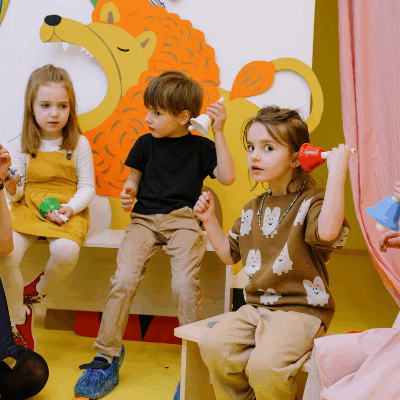Teaching people about whole life stewardship goes far beyond passing the offering plate. This is especially true when we think about how to help children understand their role as caretakers of God’s gifts. Including children in steward education and formation is a critical step in their faith foundation, and MMFA is here to help.
Why Start Early?
Children are naturally generous and eager to contribute to something meaningful. When we introduce stewardship concepts early, we help them develop a lifelong understanding of gratitude, responsibility, and faithful living. Rather than viewing stewardship as an adult-only concept, successful programs recognize that children can be active participants in the life and mission of the church.
Where Do We Begin?
- First determine what you want children and youth to understand about stewardship (the answer to “What is stewardship?”) and then select lessons. Lessons could focus on how we care for:
- Time and priorities
- Talents and spiritual gifts
- Creation
- Ourselves: our bodies and our health
- Relationships with others
- Treasure/possessions
- Be sure to consider what “good steward attitudes” you want children to learn (the answer to “How should we steward the things we care for?”) and incorporate those into the lessons. Attitudes could include thoughtfully, generously, responsibly, joyfully, for the betterment of others, etc.
What Programs Does MMFA Recommend?
- The PC(USA) offers several stewardship-focused materials through their official store and educational ministries. Follow Me: Biblical Practices for Faithful Living is a twenty-seven-unit curriculum from the PC(USA) based on practices Jesus did and taught us to do as faithful followers. Written for people of all ages who wish to live out their faith, this new curriculum examines where these practices are found in the Bible and how they have been used in Christian faith then and now. This comprehensive approach helps children understand stewardship as one of many faithful practices.
- Stewardship for Kids: a simple framework with six stewardship principles and a relevant scripture passage. This program is great for churches with Christian Educators and/or Sunday School teachers who want a starting point on which to develop their own lessons.
- Our ecumenical partners in the Episcopal Church have several suggestions for teaching children about stewardship including pledge cards and activities for families.
- Offerings for Kids: another great creative Episcopalian resource that shows kids they have so much to offer.

What Else Should We Consider?
A Seasonal Stewardship Program structured around the church calendar, connecting stewardship to key seasons:
- Advent: Focus on giving and preparing hearts
- Lent: Emphasize sacrificial giving and simplicity
- Easter: Celebrate new life and renewed commitment
- Ordinary Time: Practice daily stewardship habits
Mission Project Integration
Connect stewardship education directly to hands-on mission work. Partner with local food banks, environmental projects, or global mission initiatives. When children see their gifts making a real difference, the concept of stewardship becomes tangible and meaningful.
Age-Appropriate Adaptations
Preschool (Ages 3-5)
- Simple stories about sharing and caring
- Sensory activities with natural materials (God’s creation)
- Beginning concepts of “thank you” prayers
- Helping with simple church tasks
Elementary (Ages 6-11)
- Biblical stories focusing on stewardship themes
- Hands-on service projects
- Introduction to church budget basics
- Personal stewardship journals or charts
Middle School (Ages 12-14)
- Deeper theological exploration of stewardship
- Leadership opportunities in church activities
- Understanding global mission and justice issues
- Personal financial literacy connected to faith
Anything Else?
Start Small and Build
Begin with one or two key concepts rather than overwhelming children with everything at once. A simple focus on gratitude and sharing can grow into a comprehensive understanding over time.
Make it Interactive
Children learn best through experience. Include games, drama, art projects, and real-world applications rather than relying solely on lectures or workbooks.
Involve Families
Send home discussion questions, family service challenges, or simple activities that reinforce what children are learning at church. When families participate together, the lessons have greater impact.
Connect to Worship
Help children see how stewardship concepts appear in regular worship services. Point out prayers of thanksgiving, offering moments, and hymns that speak to stewardship themes.
Evaluate Success
- Successful children’s stewardship programs show evidence of:
- Increased participation in church activities
- Greater awareness of others’ needs
- Age-appropriate understanding of giving and serving
- Development of gratitude and thanksgiving habits
- Growing sense of responsibility for God’s creation
Remember that the most effective stewardship education happens when it’s woven naturally into the ongoing life of the church community. Rather than treating it as a separate subject, integrate stewardship concepts into Bible studies, seasonal celebrations, mission activities, and everyday church life.
Conclusion
Teaching children about stewardship is ultimately about helping them understand their identity as beloved children of God who are called to care for the world and one another. When we provide age-appropriate, engaging, and meaningful opportunities for children to learn and practice stewardship, we’re not just teaching concepts—we’re forming faithful disciples who will carry these values throughout their lives.
The investment in children’s stewardship education pays dividends not only in the present life of the church but in the formation of future leaders who understand that faith and generosity go hand in hand. By starting early and providing consistent, creative opportunities for learning and practice, your church can nurture generous hearts and faithful stewards for generations to come.
*This blog was written with a little help from our AI friend Claude.








